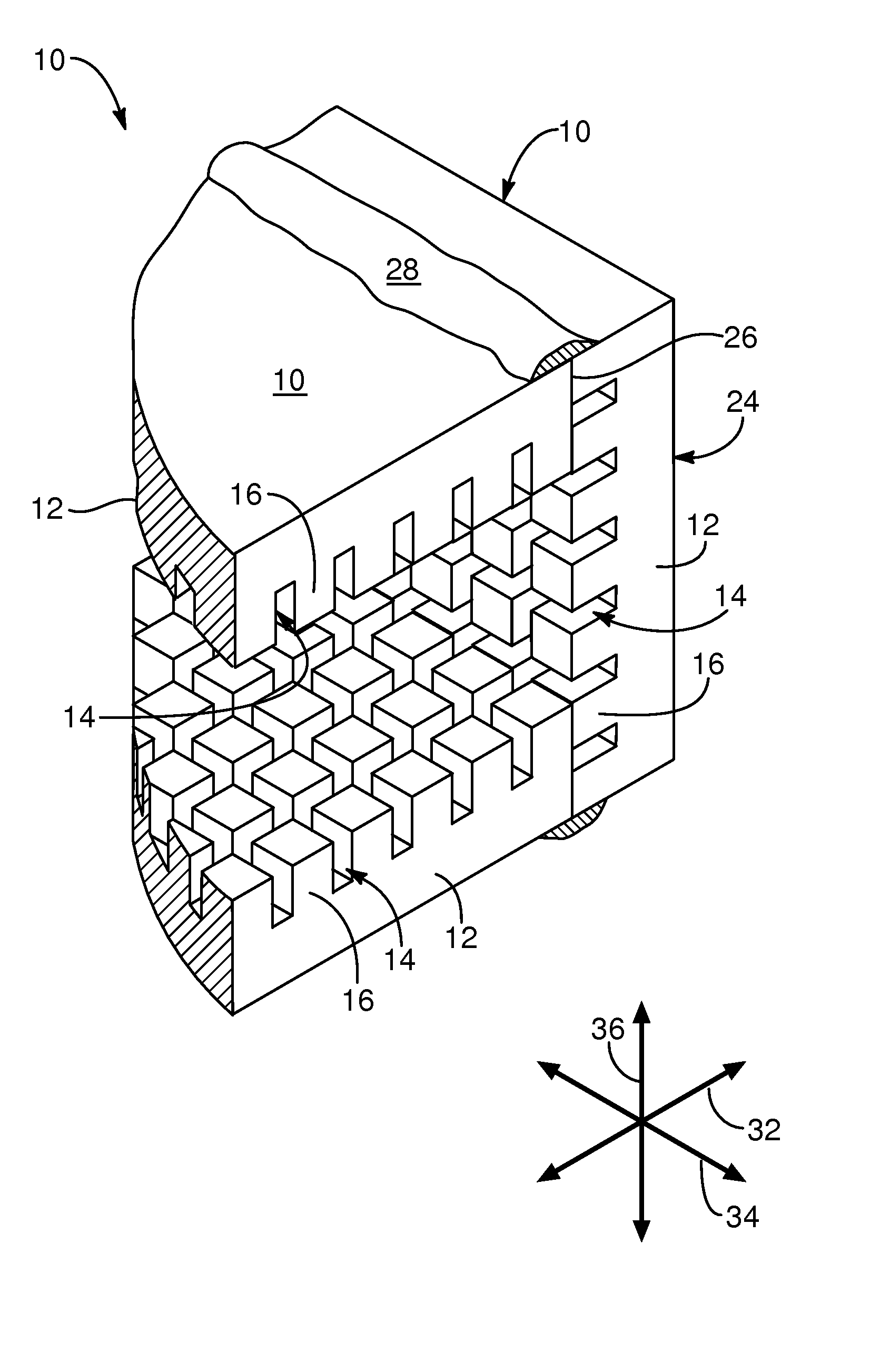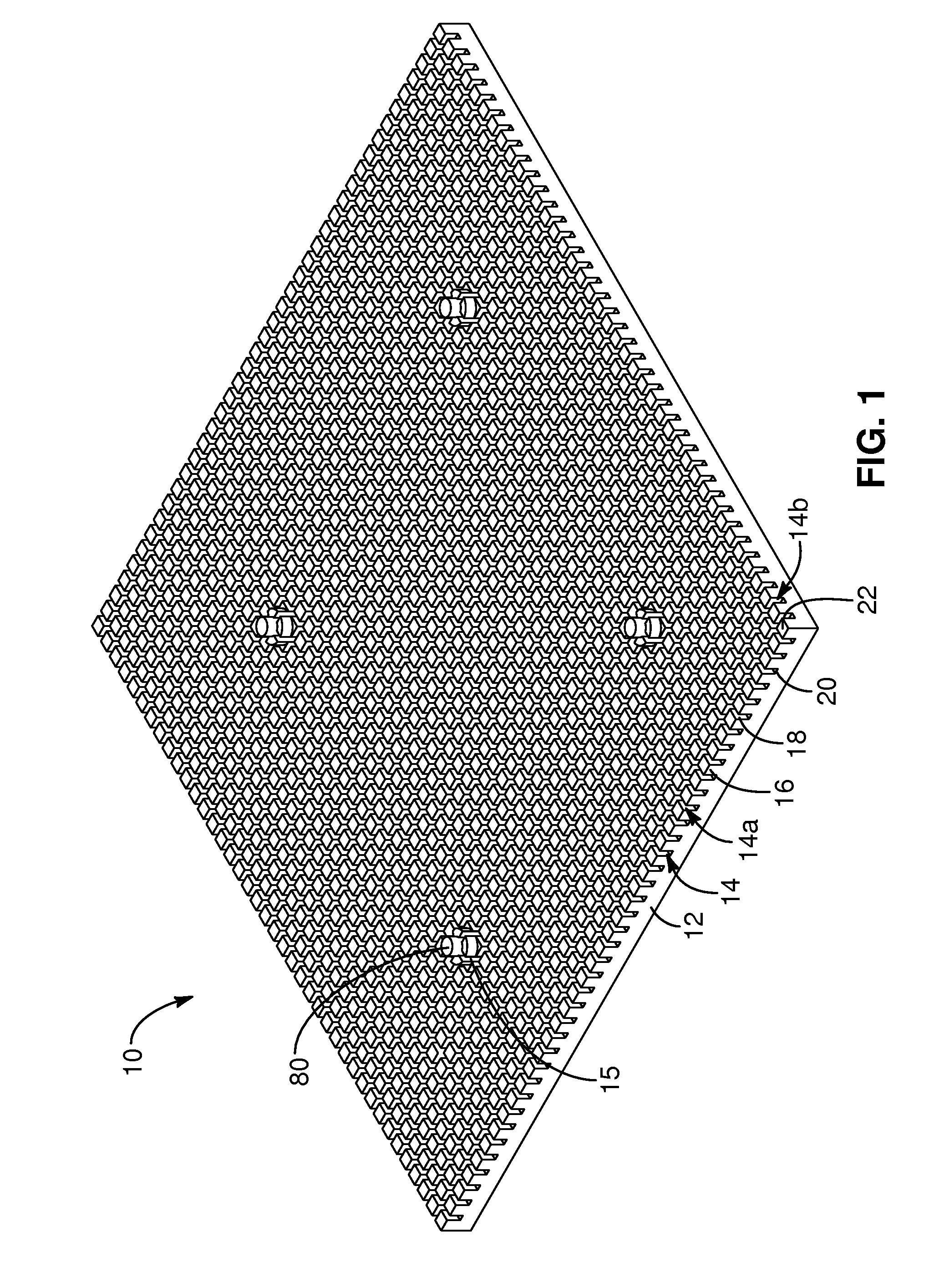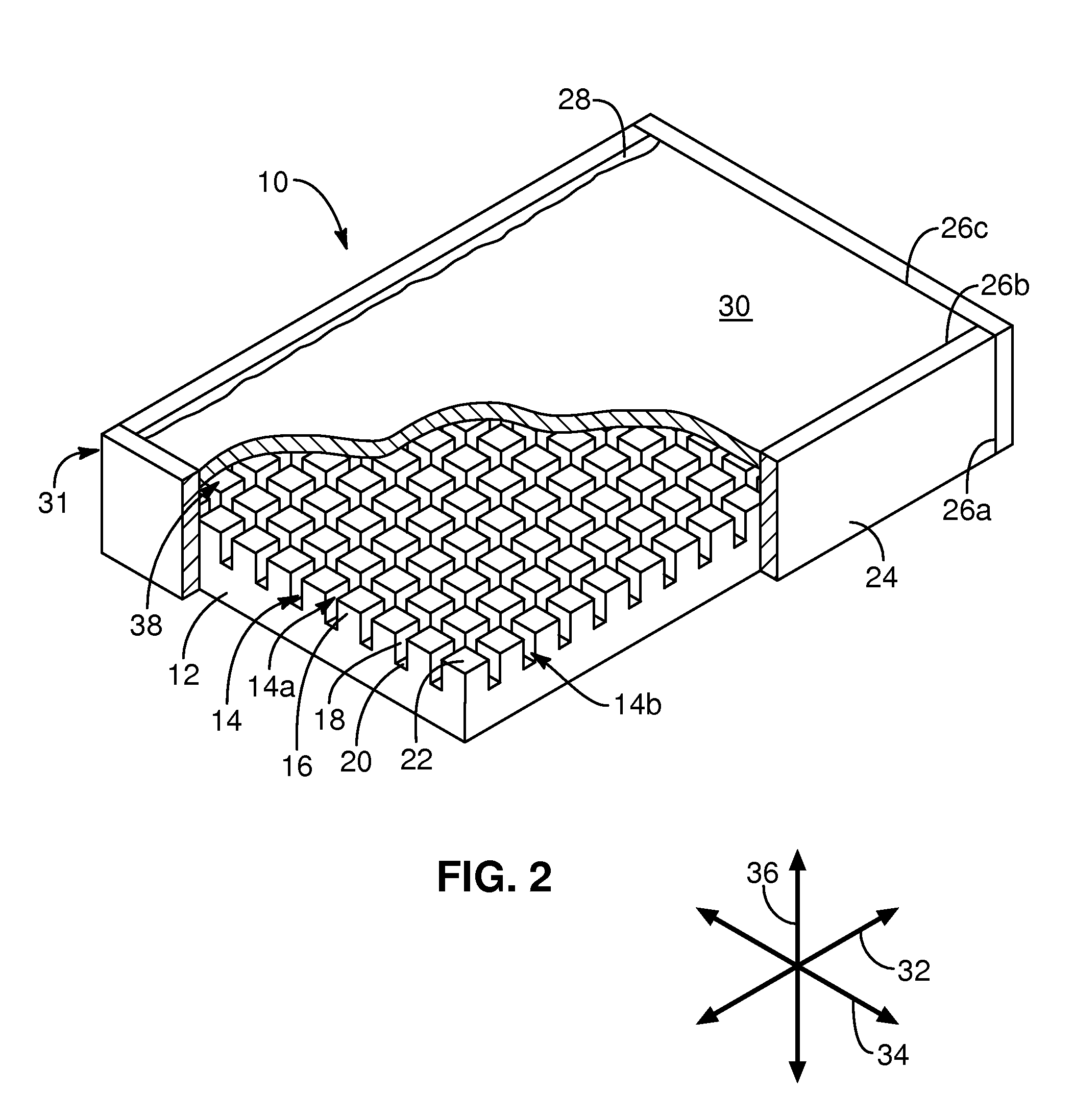Minimal-temperature-differential, omni-directional-reflux, heat exchanger
a heat exchanger and omni-directional technology, applied in the field of heat pipes, can solve the problems of large relative temperature differentials, inability to easily control wicks, and dynamic activity of heat exchange systems that do not necessarily lend themselves to optimization, and achieve the effect of promoting the flow of working fluids
- Summary
- Abstract
- Description
- Claims
- Application Information
AI Technical Summary
Benefits of technology
Problems solved by technology
Method used
Image
Examples
Embodiment Construction
[0067]Referring to FIGS. 1-4, an apparatus 10 in accordance with the invention may be formed to have a base 12 formed of a material suitable for heat transfer. Typical materials may be metals such as aluminum, copper, steel, and the like. In certain embodiments, materials of comparatively lower thermal conductivity such as polymers, polymer composites, and carbon-carbon composites have successfully been used. Aluminum has been found to be an excellent heat transfer material. Likewise, gold and precious metals have excellent heat transfer characteristics, in spite of their exorbitant costs for most applications. In certain embodiments, various varieties of steel and other metals are also suitable.
[0068]In certain embodiments, applicants have manufactured plastics having suitable heat transfer characteristics if view of the close proximity of the internal surfaces, at which phase changes occur, to the external surfaces in contact with the heat source or sink. This direct wetting of in...
PUM
 Login to View More
Login to View More Abstract
Description
Claims
Application Information
 Login to View More
Login to View More - R&D
- Intellectual Property
- Life Sciences
- Materials
- Tech Scout
- Unparalleled Data Quality
- Higher Quality Content
- 60% Fewer Hallucinations
Browse by: Latest US Patents, China's latest patents, Technical Efficacy Thesaurus, Application Domain, Technology Topic, Popular Technical Reports.
© 2025 PatSnap. All rights reserved.Legal|Privacy policy|Modern Slavery Act Transparency Statement|Sitemap|About US| Contact US: help@patsnap.com



